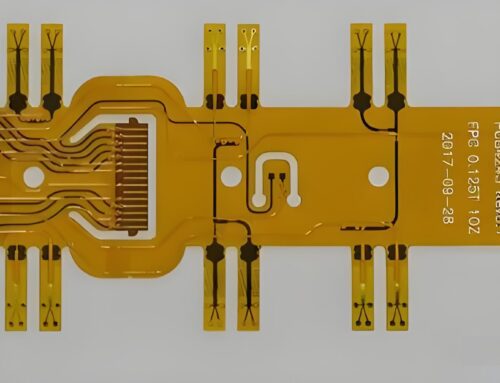Causes and Solutions for Flexible Printed Circuit Boards Failures
Introduction
Flexible printed circuit board (FPCB) is an important component in modern electrical and electronic listening equipment. FPCB has advantages, but there is a possibility of failure due to various factors. Manufacturers and end users need to understand the causes of these failures and implement a strategy to enhance trust. In this book, the paper identifies key causes of Flexible Printed Circuit Board failures and proposes design strategies to enhance reliability.

Failure Causes of Flexible Printed Circuit Boards
Improper Circuit Design
One of the primary reasons for FPCB failures is improper circuit design. Issues such as incorrect wiring and signal line coupling can lead to malfunctions. To mitigate the risk of failure, it is essential to thoroughly analyze and confirm the circuit design, followed by continuous monitoring and adjustments.
Material Aging
Material aging is another significant cause of FPCB failures. The reliability and lifespan of FPCBs depend heavily on the quality and durability of the materials used. Prolonged use and environmental changes can accelerate material aging, leading to failures. Therefore, selecting appropriate materials and conducting regular monitoring and maintenance during usage is critical.
Non-standard Processing Techniques
Non-standard processing techniques also contribute to FPCB failures. The quality control during the manufacturing process and the technical skills of the operators significantly impact the quality and lifespan of FPCBs. Ensuring strict adherence to processing standards and quality control measures is vital to prevent such failures.
Environmental Factors
Environmental factors play a crucial role in the failure of FPCBs. Harsh environments, such as high temperatures and humidity, can cause FPCBs to fail. It is essential to consider environmental impacts during the usage of FPCBs and implement preventive measures accordingly.
Design Strategies to Improve Reliability of FPCBs
Reliability Testing
To ensure the reliability of flexible printed circuit boards, a series of reliability tests must be conducted. These include temperature cycling tests, humidity cycling tests, mechanical bending tests, and vibration tests. These tests evaluate the reliability and stability of FPCBs under various stress conditions, helping to identify potential issues early and allowing for improvements and optimizations.
The importance of FPC raw materials
FPC raw materials play a significant role in achieving lightweight and reliable FPCBs. By selecting suitable materials, strictly controlling the manufacturing process, focusing on design points, and conducting reliability tests, the development of FPCBs can be significantly advanced. As technology continues to progress, FPC prototyping will find applications in more fields, bringing convenience and innovation to various industries.

Optimizing FPCB Production Line
Investment in Automation Equipment
Investing in advanced automation equipment can enhance production efficiency, reduce labor costs, and improve product consistency and quality. Automation can accelerate processing steps and shorten production cycles.
Process Optimization
A comprehensive analysis of the FPCB processing workflow is necessary to identify bottlenecks and inefficiencies. Streamlining processes, reducing unnecessary waiting and transportation times, and enhancing production efficiency are crucial steps.
Preventive Measures and Problem Solving
Establishing a robust quality management system, strengthening quality control and testing, and promptly addressing issues can prevent the production of defective products, reduce rework, and enhance production efficiency.
Personnel Training and Team Collaboration
Improving employee training, enhancing skill levels, fostering team collaboration, and effective division of labor can significantly boost work efficiency.
Continuous improvement
Regular evaluation of the production process, gathering feedback, identifying areas for improvement, and continuous optimization of the FPCB processing process can lead to continuous improvements in product performance and quality.
Technological innovation and R&D investment
By paying attention to the latest technological trends and continuously investing in technological innovation and research, companies can introduce new technologies and equipment to improve production efficiency and product competitiveness.
Optimizing processes and improving production efficiency are essential for businesses to stand out in a competitive market. Thanks to the increase in automation equipment, process optimization, and staff training, the company can outperform its competitors and reach a higher level of development!

conclusion
Ensuring the reliability of flexible printed circuit boards (FPCBS) is a parameter in today’s rapidly evolving electronics field. We can significantly improve the durability and performance of FPCBS by addressing major failure causes such as inappropriate circuit design, material aging, substandard recycling techniques, and environmental factors. In this effort, implementing rigorous reliability testing, investing in automation, optimizing production processes, and promoting technical cooperation are crucial strategies. Through continuous improvement and innovation, FCB will meet the growing needs of different industries, while emphasizing its key role in advanced technology. The Gekun brand is committed to delivering superior FPCBS that ensures high performance and reliability for all applications.







Leave A Comment